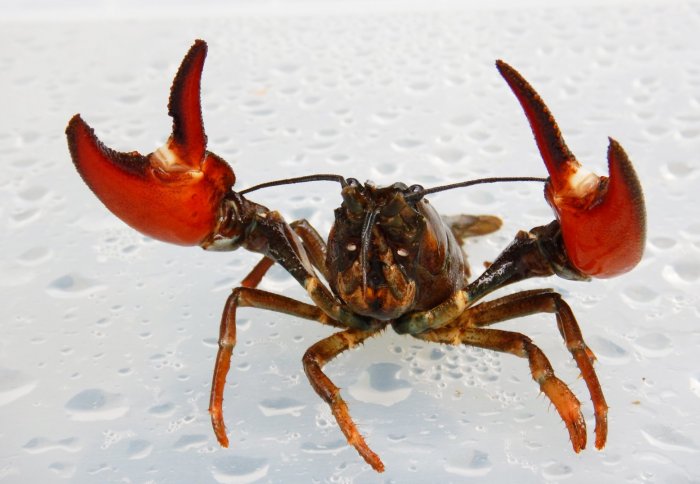Fishing for DNA during breeding season could help control invasive species

Research reveals that an invasive crayfish species is easier to detect in water samples during breeding, which could lead to better control.
An invasive species is any animal or plant that is introduced to an area and has the capacity to cause harm. They can impact native wildlife by outcompeting them for food and damaging local environments, for example grey squirrels outcompeting reds. Early detection of invasive species is important to prevent their spread.
I hope that my work will be able to help with the management of invasive species so that our native species stand the best chance of survival.
– Nick Dunn
However, because some species move around, it can be very difficult to measure population numbers as they cannot always be observed. Because of this problem, scientists are now choosing to monitor environmental DNA (eDNA); the DNA that organisms constantly release into the environment through faeces, mucus, shedding skin and hair, and eventually in carcasses.
Found in land and water, eDNA can be used to find out which organisms have been present in a habitat to estimate population numbers and detect early signs of detrimental invasive species.
In collaboration with the environmental consultancy group, Thomson Ecology, a Masters’ student from the Department of Life Sciences has been sampling crayfish eDNA in water. Published today in the journal Ecology and Evolution, his project explored the effect of the invasive American signal crayfish, Pacifastacus leniusculus, on the decline of the UK’s only native crayfish species, Austropotamobius pallipes.
Egg-bearing boom
When monitoring P. leniusculus in tanks, the student found that when the female crayfish were bearing eggs, the levels of eDNA dramatically increased in proportion with numbers of this crayfish species.
In contrast, when the animals did not bear eggs, the correlation between eDNA and numbers of the invasive crayfish was lost. This indicates that detecting and estimating crayfish abundance using eDNA would be more effective during the breeding season.
If this research is successful in the field, this method of detecting eDNA during egg-bearing phases could change how organism populations are measured.
Once invasive crayfish have established in an area, populations are very hard to control. This method could identify invasive species at low abundances, detecting the problem early, and eradicating the invasive species before any harm is caused to native species.
Best chance of survival
Crayfish carry their eggs on the outside of their bodies, like many other invertebrates. It is this direct connection between the egg and the water that is thought to increase eDNA levels in the water. This research could therefore also apply to frogs and newts, as their eggs are also spawned directly into water.
Nick Dunn, Masters student in Ecology, Evolution and Conservation, and lead author on the research paper, said: “I hope that my work will be able to help with the management of invasive species so that our native species stand the best chance of survival.
“This project wouldn't have been possible without PhD student Victoria Priestley, and it would be really exciting if my work has opened the door for further research to be undertaken by future Masters’ students at Silwood.”
Project supervisor and study co-author Professor Vincent Savolainen, from the Department of Life Sciences at Imperial, said: “This paper exemplifies the high quality research that our Masters’ students undertake as well as the importance of collaborating with non-academic partners such as Thomson Ecology. This research exploits new ways of conducting environmental monitoring and combatting invasive species.”
-
'Behavior and season affect crayfish detection and density inference using environmental DNA' by Nicholas Dunn, Victoria Priestley, Alba Herraiz, Richard Arnold and Vincent Savolainen is published in Ecology and Evolution.
Article text (excluding photos or graphics) available under an Attribution-NonCommercial-ShareAlike Creative Commons license.
Photos and graphics subject to third party copyright used with permission or © Imperial College London.